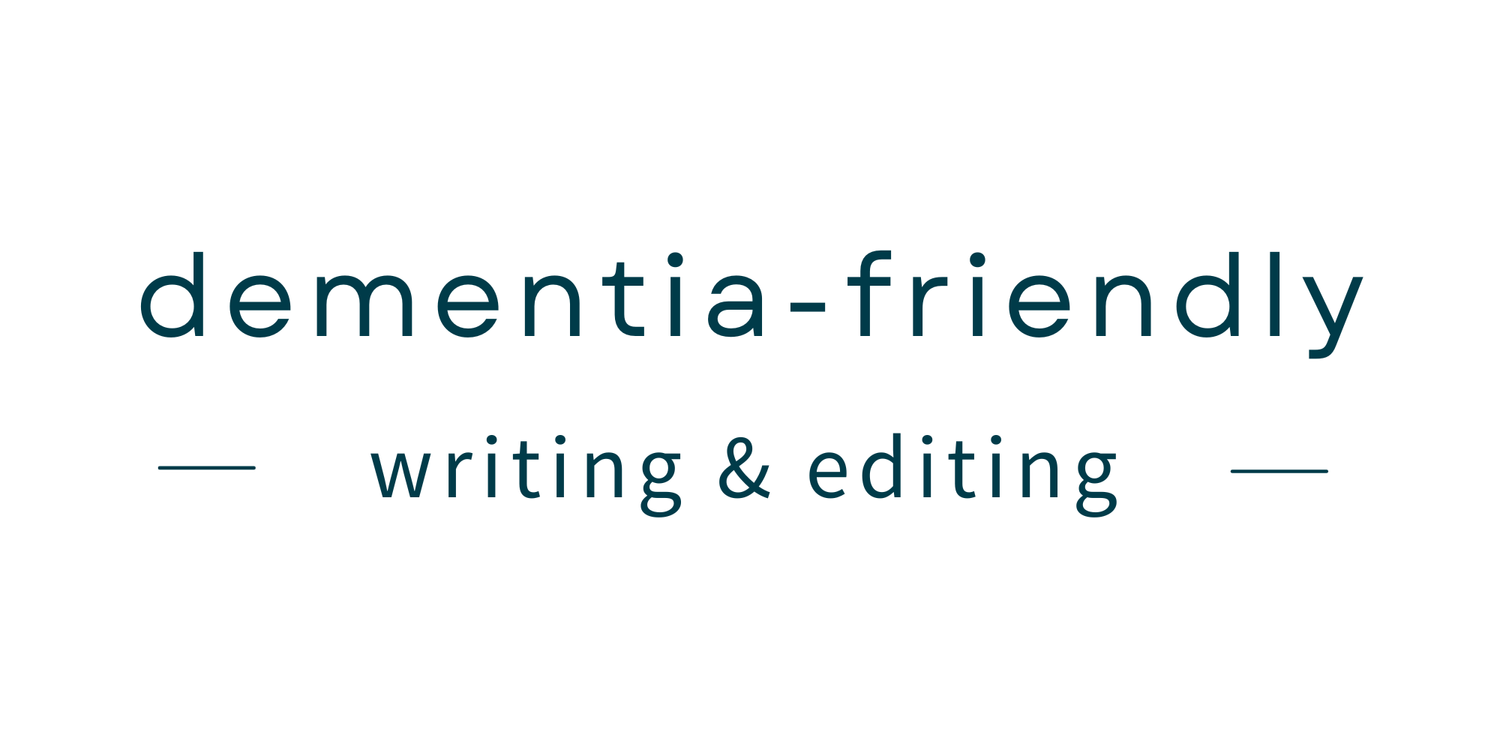Vertical lists
Do you like a list? I’m someone who has lists for everything. An ongoing shopping list. A to-do list for the day. A master list for the week. A packing list for an upcoming holiday. The list goes on 😊
I like to be able to see things clearly one at a time. I love ticking things off as I go along.
And lists – vertical lists – are a great way of making your written information clear.
We’re constantly inundated with information from various sources. It comes from social media, the internet, in letters through the door. This can be challenging for all of us. If you are living with dementia, it can be totally overwhelming.
An effective way to present information so that it is easy to follow is to use a vertical list.
WHY LISTS ARE GOOD
You can use each point to present an individual item, a step to follow, or a single idea. They’re useful for organizing large amounts of information into manageable chunks.
They’re also much easier to read. You can quickly see key information and refer back to it when needed. A list breaks up a paragraph and add space.
1. For large numbers of items.
Lists are good for presenting a large number of items. Rather than writing a paragraph of continuous text, you can use a vertical list.
Example
For example, an appointment letter might include the following paragraph:
“When you come to your appointment you should bring some comfortable clothes and shoes to change into. Don’t forget to bring your appointment letter and medical record card, along with a drink of water and a snack for afterwards.”
BUT you could present this as a list.
Bring these items with you to your appointment:
· Your appointment letter
· Your medical record card
· Some comfortable clothes to change into
· Comfortable shoes
· A drink of water
· A snack to eat after your appointment.
2. For describing steps that the reader should follow
If you’re giving instructions about a process, use a list to present them in an easy-to-follow format.
Example
One of the recipe books on my shelf includes short paragraphs like this:
“Stir in the flour, followed by the stock. Bring to the boil, then simmer on a low heat with the lid on for 30 minutes.”
These instructions could be written in a more dementia-friendly way as a list:
1. Stir the flour into the ingredients in the saucepan.
2. Stir the stock into the ingredients in the saucepan.
3. Turn up the heat so that the mixture starts to boil.
4. Put the lid on the pan.
5. Turn the heat down low so that the mixture simmers.
6. Cook like this for 30 minutes
(NB: dementia-friendly recipes coming soon)Useful Points to remember:
Make sure that each list item creates a complete sentence with the ‘lead phrase’.
Vertical lists are easier to read if all items have a similar grammatical structure.
Use consistent punctuation. Readers get used to patterns. There are various ways of punctuating lists and you can read more in the Oxford Guide to Plain English. Whichever you choose, make it clear and consistent.
